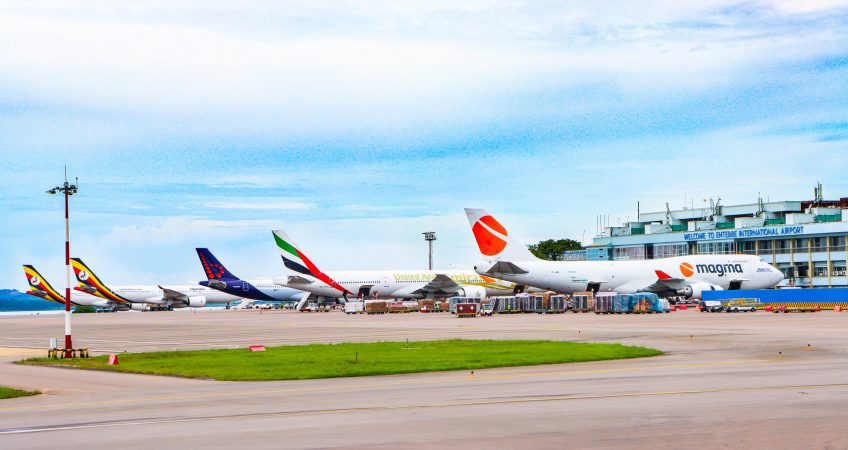
The aviation industry in Uganda has recorded tremendous progress over the past years. In line with the Uganda Vision 2040, the Government has developed a 20-year National Civil Aviation Master Plan with Entebbe International Airport and other airfields a key component.

Aproject for the upgrade and expansion of its main gateway at Entebbe, Uganda’s former capital, is seen as critical to the development of the air transport industry as passenger and cargo demand continues to grow.
The “Pearl of Africa”, depicted by Winston Churchill during his visit to Uganda before its independence, is writing its modern “fairy tale” with a clear, pragmatic, and steady vision.
At the inception of Uganda Civil Aviation Authority’s (UCAA) in 1991, the airport handled 118,000 international passengers. In 2019, It handled 1.8 million passengers.
After disruptions due to the pandemic, the airport registered 1.57 million passengers in 2022. During the first quarter of 2023, Entebbe recorded 402,314 passengers compared to 414, 431 at the same period, prior to the pandemic.
“The revival and commencement of flights by the national airline, Uganda Airlines, is expected to further grow this traffic in subsequent years, and promote the country’s tourism potential”, said the airport’s director general Fred Bamwesigye.
New operators like Airlink, which started flights to South Africa in September 2021, Air Arabia, with from Entebbe to Sharjah, UAE, in October 2021, and Air Kenya, among others, will boost traffic even more, Bamwesigye said.
The overall project for upgrade and expansion of Entebbe International is at 85% level of completion and include the strengthening of the main runway 17/35 and the alternative runway 12/30, and associated taxiways, the rehabilitation of parking apron 4; reconstruction of parking apron 2 and expansion works of the main aircraft parking apron 1 are ongoing.
A new terminal building is under construction in an area previously used for cargo operations to increase Entebbe’s capacity from 2 to 3.5 million yearly by the end of this year.

The existing terminal has also been re-modified to provide more space in the departure area. By the end of this month, drop-off facilities will be available at the entrance of the terminal building.
Cargo is also part of the ambitious development. The sector has seen increasing needs to meet higher demand for fresh produce especially fish, flowers, fruits, and vegetables. Uganda’s major markets are the Netherlands, Belgium, and the Middle East. Entebbe handled 61,000 metric tons in 2022 compared to 6,600 metric tons of cargo in 1991.
A new state-of-the-art cargo centre with a capacity to handle 100,000 metric tons per year has been built to address bulging demand. Cargo operations have already shifted to the new facility.
A terminal operations control centre has been set up by Korea International Cooperation Agency (KOICA) to ensure automation of operations as part of a $9.5 million grant by its government. The project has also delivered a computerised maintenance management system (CMMS), an airport operational database (AODB) system, an ATS message handling system (AMHS) as well as an improved flight procedures efficiency through air traffic management and training/capacity building.
“One of UCAA’s strategic objectives is to promote the development of an air navigation system aligned to the global air navigation plan (GANP). It provides airspace users with improved capacity and efficiency. The air traffic management system has undergone various system improvements and upgrades to enhance safety”, said Bamwesigye.
UCAA and Entebbe International Airport obtained the ISO 9001:2015 quality management systems (QMS) certificate in 2021 following compliance with stringent UKAS requirements. Other aerodromes operated and managed by UCAA in Gulu, Arua, Soroti, Mbarara, Tororo, Kisoro, Pakuba, Kasese, Jinja and Kidepo have also been awarded certification for a three-year period up to 2024.
Adopted from: Times Aero Space July 21, 2023
